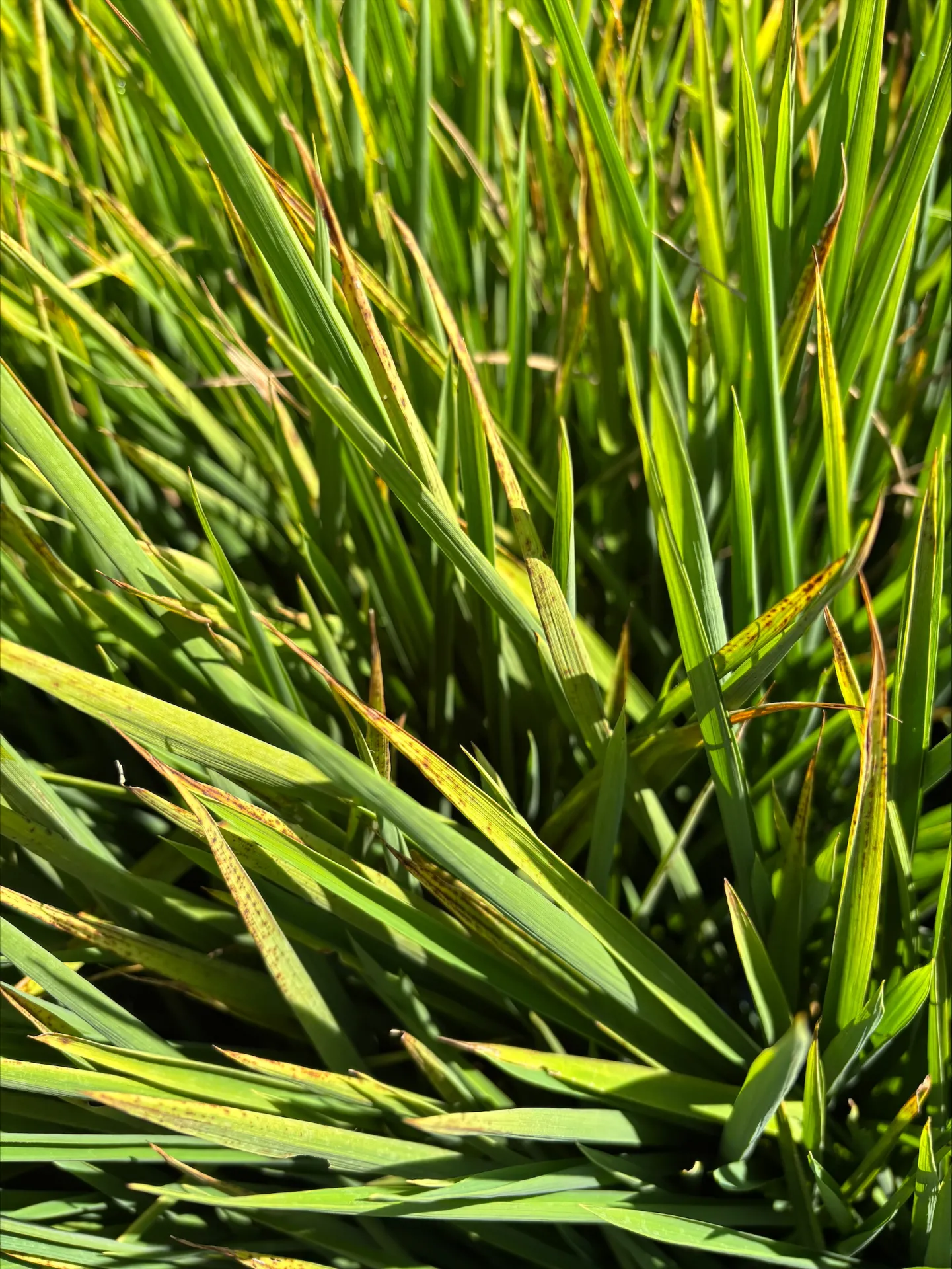We have posted about potassium deficiency before, but we have gotten a couple of calls and messages about this recently.
When potassium is deficient, leaves start showing reddish spots on the tips. These spots can be somewhat elongated and give the impression of a narrow lesion. The lesions appear late. This year we have visited a couple of fields with symptoms at the late boot stage; in one of the fields the spots were faint and just starting to develop, in the second field (pic below), the symptoms were well developed.

Typically, the symptoms appear in small patches that get larger with time and then become uniform across the field. This is a tell-tale sign that the issue is a soil problem and not a disease. When K is deficient, aggregate sheath spot and stem rot can become more severe.
The threshold for K deficiency in leaf tissue around heading is 1.2%. The analysis from the field shown above was at 1%. It does not take much for the deficiency to produce symptoms.
This problem is more common on the east side of the Valley, but it can also occur on the west side. Twenty or so years ago it was considered that rice ground on the west side did not need K, but in some cases K deficiency can develop.
How much K do you need? It depends on yield and straw management. A 90 cwt yield removes 26 lb of K/a in the grain and 126 lbs of k/a in the straw.
The best timing for application would be during ground work or when P is applied. We don't know if applications around heading are effective.
For more detailed information, see our K fact sheet.

